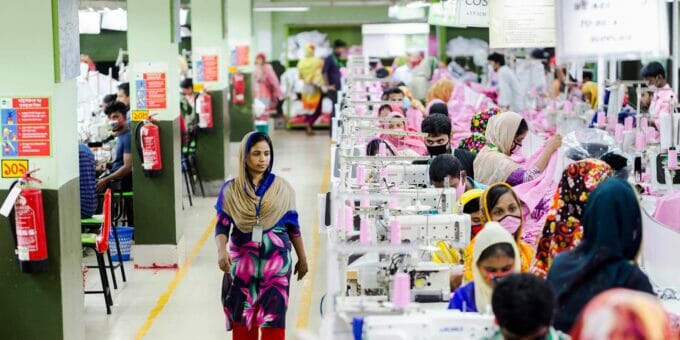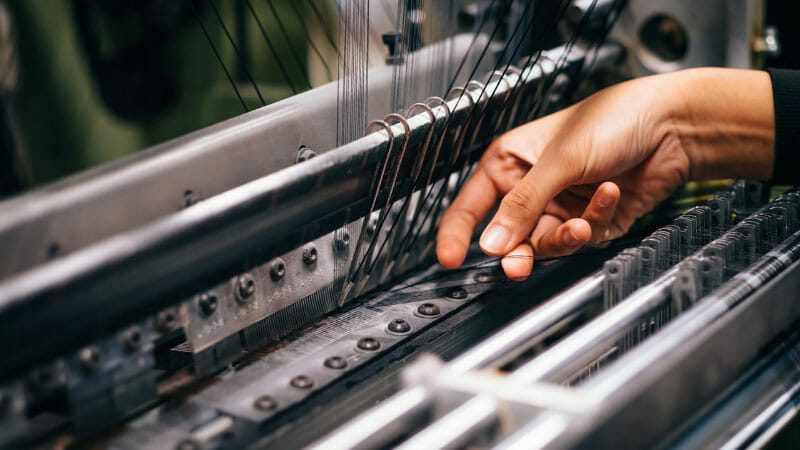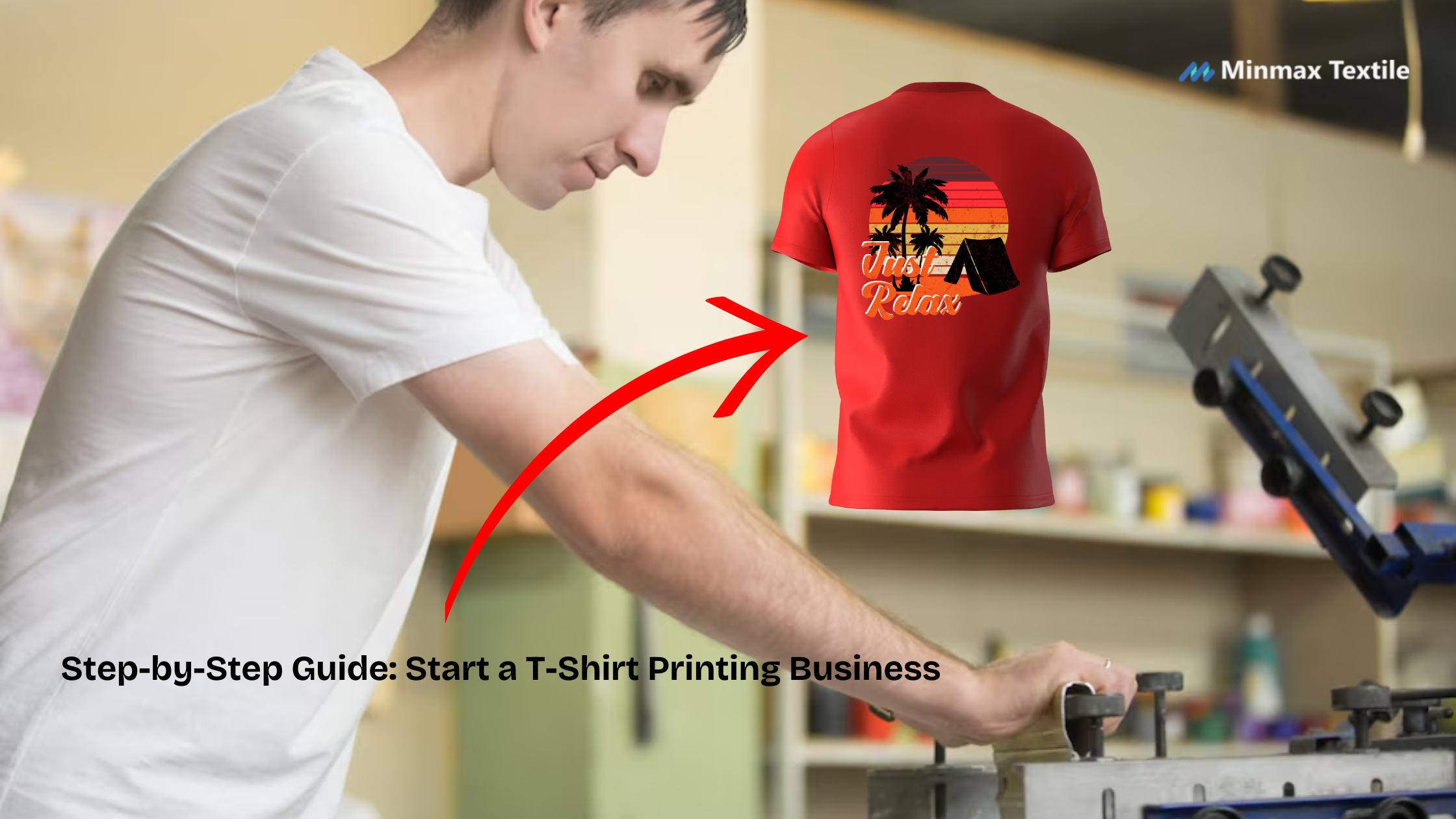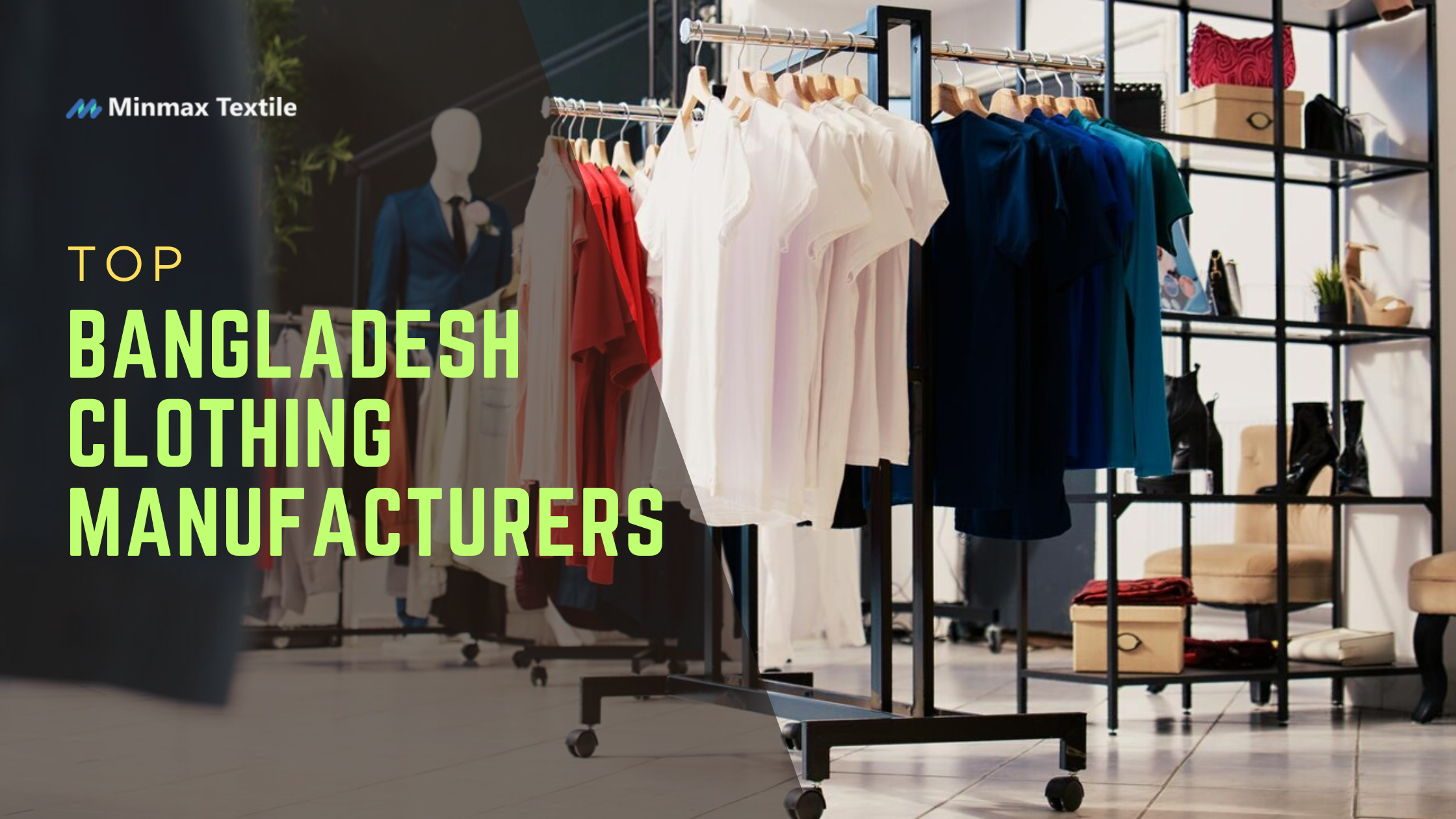Garment industry is the most important sector in the economy of Bangladesh. In addition to the highest export earnings, the sector has been making a major contribution to the employment of millions of people for the last four decades. In the field of women’s empowerment, the garment industry is ahead of any other sector. Due to the versatile facilities of the government, cheap labor and the hard work of the entrepreneurs, Bangladesh has been able to occupy the second position in the export of readymade garments.
After the collapse of Rana Plaza in Savar, the garment industry of Bangladesh suffered a major blow. However, in the last seven years, due to various initiatives, it has turned out quite well. However, in the ongoing coronavirus epidemic, the country’s highest export earnings sector is once again facing a major catastrophe. Many entrepreneurs in the sector were shocked when one purchase after another was canceled and suspended in March when Corona took a terrible turn. However, in a few days the situation improved a bit. Exports continue to grow slowly. However, even if the situation improves temporarily, Corona will have to face various challenges in order to survive in the garment export business in the future. It will take initiative of the entrepreneurs as well as the concerned departments of the government. The point is, we need to be quick to adapt to changing circumstances.In today’s report, we will discuss the challenges and challenges of the next garment sector. But before that I will know some information about the basics of the garment sector. So that a complete picture of the garment sector is available.
The story of the beginning of the garment industry
Bangladesh Garments started its journey of exporting 198 garments. After retiring from government service, Mohammad Nurul Quader established a factory called Desh Garments at Kalurghat in Chittagong. At that time no worker-owner in Bangladesh had any experience in ready-made garment factory. So in the beginning, he tied the knot with the South Korean company Daeyu.
At that time, Nurul Quader sent 130 people from Desh Garments to South Korea to teach them work. Among them were workers and officials. Many of whom later became owners of garment factories themselves. As a result, it would not be an exaggeration to call the country’s garment mogul Mohammad Nurul Quader the pioneer of Bangladesh’s garment industry. Desh Garments was the proponent of everything from back to back LC, Bonded Ware House as the first garment factory in the country.
One after another garment factories have sprung up in Bangladesh following the path shown by Nurul Quader. Many of the entrepreneurs who started their journey with their own houses or rented small factories at different times in the nineties now own many garment factories. Many have started in garment factories and have become commercially successful in other sectors as well. At this stage we can talk a little bit about the success of Dulal Brothers or DBL Group.
The four brothers converted their old house into a small factory with a capital of Tk 60 lakh given by their father. Bought 36 sewing machines. For a few days in the morning and afternoon, hundreds of workers gathered at the gates of various factories in the area. Brought contract work (subcontracting) from another factory. After making the dress, the delivery is done. This went on for a couple of years. But despite their hard work, the four brothers did not see any profit in two years.
Although it was not a profit, the four brothers fell in love with two or four buyers in a few days by explaining the quality and time of the product. As a result, in 1993, they received a direct purchase order from a UK buyer. Three thousand piece polo shirts. Then the four brothers did not have to look back. They have been one of the top garment exporter industry for 29 years.
The company that started in 1991 with a small factory on 102 Green Road in Dhaka is today’s Dulal DBL Group. And those four brothers are Abdul Wahed, MA Jabbar, MA Rahim and MA Quader. They are the Chairman, Managing Director (MD), Vice Chairman and Deputy Managing Director (DMD) of DBL Group respectively.
Although it started with clothing, DBL has entered the business of ceramic tiles, information technology, telecommunication and dredging for the last 29 years. Soon they are also coming to the drug business in the country. In all, there are currently 24 DBL Group companies. 36,000 employees work in these organizations. In the 2018-19 financial year, the group’s annual turnover was about US Core 600 million, which is equivalent to Tk 5,100 crore in the domestic currency. Of this, 90 per cent came from the ready-made garment business. In all, the group has invested more than Tk 6,000 crore.
According to BGMEA, an association of ready-made garment owners, they currently have 4,621 member factories. 44 lakh workers work in these factories. A few days ago, the leaders of the organization gave this information, but now they say that last July, 1,926 garment factories.Directly garment exporter. 20-22 lakh workers work in these factories. On the other hand, the number of member factories of BKMEA, an association of net garment industry owners, is 2,263. However, the leaders of the organization have been saying for the last few months that the number of factories that directly export among the members is 636. Most of the remaining factories are closed. BKMEA cannot say the exact number of workers in the factory. As a result, there is confusion about the exact number of factories in the garment industry and the exact number of workers employed there.
Growing up with government facilities
Cheaper labor than other countries, quotas as well as government benefits i.e. duty free imports, 25 per cent cash assistance, back-to-back LCs, bondedware house facilities and the attraction of the protected market have led many entrepreneurs to venture into the garment business without prior experience. On the other hand, Sri Lanka started before Bangladesh but fell behind due to civil war in the early eighties. Then the buyers of developed countries choose Bangladesh as a good alternative. As a result, garment exports continue to grow rapidly.

Another big advantage was given towards the end of Ershad government. Arrangement of local debentures or back-to-back debentures (LCs). As a result, the entrepreneurs did not have to spend any money on importing raw materials. Entrepreneurs then only had to bring garment exporter orders. And the responsibility of money belongs to the bank. Yet many garment owners feel that bond-backing and back-to-back LCs play a key role in the sector’s massive growth.
In that continuity, the Awami League government of 1996-2001 gave another big advantage to the garment sector. The textile and garment sector was given 25 per cent cash facility in 1996. However, the BNP government reduced it to 15 percent in the 2002-03 financial year. There is still cash assistance. There are also new facilities. Opportunity The latest example is the first incentive package (Rs 5,000 crore) announced after the launch of Corona with the garment industry in mind.garment exporter have increased 6 times
The garment sector, which did not exist at the time of independence, now accounts for 80 per cent of the country’s total export revenue. In the financial year 1983-84, the amount of garment exporter was 3 crore 15 lakh dollars. In the just outgoing financial year, the export has been 2 thousand 795 crore dollars. This means that exports have increased 6 times in 36 years.
As a single country, the major markets for Bangladeshi readymade garments are United States, Germany, United Kingdom, Spain, France, Italy, Japan, Netherlands, Canada, Denmark, Australia, Belgium etc. As an alliance, the European Union (EU) is a big destination for Bangladeshi clothing. In the last 2019-20 fiscal year, the total garment exporter to the EU was 1,614 crore dollars or 61.35 percent. After that, the highest export to the United States was 514 crore dollars or 16.6 percent. The main reason for the increase in exports to the EU is that Bangladesh has been getting GSP facility in the market for a long time. That is why EU buyers and brands can take products from Bangladesh to their own country with duty free facility.
At one time the main markets for Bangladeshi clothing were the EU, the United States and Canada. However, even though it is late, the export of Bangladeshi made garments is increasing in the new or unconventional markets outside these three markets. Although it still has less to say than expected. In the last 2019-20 financial year, 18.10 percent of the total garment exporter or garments worth ?????? 480 million went to the new or obsolete market. Among the new markets, garments worth ??? 960 million were exported to Japan, Core 600 million to Australia, Core 440 million to Russia, Core 420 million to India, 320 million to China and Core 290 million to South Korea.
Entrepreneurs in Bangladesh mostly export more than 5 types of garments. They are – shirts, trousers, jackets, t-shirts and sweaters. In the last fiscal year 2019-20, out of 2,795 crore, 81 percent or 1,993 crore came to these five garments. Among them, shirts worth 160 million, trousers worth ??? 544 million, jackets worth 351 ??????million, T-shirts worth 571 million and sweaters worth 359 million were garment exporter .
The Tragedy of Rana Plaza: A Turning Point for Bangladesh’s Garment Industry
On April 24, 2013, the collapse of the Rana Plaza building in Dhaka, Bangladesh, marked one of the deadliest disasters in the history of the garment industry. The building housed several garment factories, and the collapse claimed over 1,100 lives and injured thousands. The event cast a spotlight on the unsafe working conditions in many of Bangladesh’s garment factories and led to a global outcry, initiating significant reforms in factory safety and labor rights.
Overview of the Rana Plaza Collapse
The tragedy shook the world, highlighting the extreme risks faced by workers in poorly constructed buildings. This event catalyzed change within the garment industry, leading to improvements in safety regulations and the emergence of initiatives aimed at improving factory conditions.
Immediate Aftermath: Loss of Lives and Global Boycott
The collapse not only resulted in a high death toll but also triggered a temporary boycott of Bangladesh’s garment industry, causing a steep decline in orders. The international community demanded better working conditions, and many global buyers reconsidered their partnerships with Bangladeshi factories.
Global Efforts to Improve Factory Conditions Post-Rana Plaza
Following the collapse, several global and local initiatives emerged to address the dire safety conditions in Bangladesh’s garment sector. These efforts were pivotal in reforming the industry and restoring international confidence.
Formation of the European and North American Buyers’ Alliances
In response to the tragedy, international buyers, primarily from Europe and North America, formed alliances to fund factory renovations, improve worker safety, and ensure that future orders were only placed with factories that met certain safety standards.
National Tripartite Action Plan (NTAP) and Factory Renovation Initiatives
The Bangladeshi government, along with industry stakeholders, implemented the National Tripartite Action Plan (NTAP) to enforce safety regulations. This plan led to the renovation of hundreds of factories, improving structural integrity and working conditions.
The Rise of Eco-Friendly Factories in Bangladesh
With increasing awareness of sustainability in global trade, Bangladesh’s garment sector began to evolve, with a notable shift toward eco-friendly factory practices.
The Pioneer: Sajjadur Rahman Mridha and Bangladesh’s First Eco-Friendly Factory
Sajjadur Rahman Mridha spearheaded the movement towards eco-friendly factories, establishing the country’s first green factory in 2016. His initiative paved the way for others to follow, with a growing number of factories adopting sustainable practices.
Growth of Eco-Friendly Garment Factories
The introduction of green factories has become a symbol of Bangladesh’s commitment to environmental sustainability. These factories adhere to strict environmental standards, with the goal of reducing carbon footprints, water usage, and waste generation.
Eco-Friendly Certifications: What It Means for Bangladesh’s Garment Sector
As the demand for sustainable fashion grows, certifications such as the US Green Building Council (USGBC) and LEED (Leadership in Energy and Environmental Design) have become increasingly important in Bangladesh’s garment sector.
US Green Building Council (USGBC) Certification
Bangladesh’s garment factories have increasingly sought the prestigious USGBC certification, ensuring that their factories meet global standards for energy efficiency and environmental responsibility.
Overview of ‘LEED’ Certification: Platinum, Gold, Silver, and Certified
LEED certification evaluates various environmental factors, from energy efficiency to sustainable building materials. Factories that achieve LEED certification gain international recognition, which in turn boosts their reputation among global buyers.
The Impact of COVID-19 on Bangladesh’s Garment Export Sector
The COVID-19 pandemic brought unforeseen challenges to the global garment industry, and Bangladesh’s garment export sector was no exception. The crisis caused a sharp decline in orders and exposed the vulnerability of the sector to global disruptions.
Initial Impact of the Pandemic on Orders and Export Rates
As countries locked down, the demand for garments plummeted, leading to a massive reduction in exports from Bangladesh. Many factories were forced to halt production, and workers faced job insecurity.
Government Intervention: Loan Assistance and Wage Subsidies for Entrepreneurs
To mitigate the impact, the Bangladeshi government introduced loan assistance programs and wage subsidies for garment entrepreneurs. This support was crucial in keeping many businesses afloat during the most challenging periods of the pandemic.
Adapting to the “New Normal” in Global Fashion
The post-pandemic world brought with it new trends in fashion consumption, and Bangladesh’s garment sector had to quickly adapt to meet the demands of an evolving market.
Shift in Buyer Expectations and Purchase Patterns
Buyers now expect faster turnaround times, increased transparency in supply chains, and more sustainable products. The shift towards online shopping also required Bangladesh’s garment factories to reconfigure their operations to keep up with the growing demand for e-commerce.
Emphasis on Fast Delivery and Online Sales
Garment buyers increasingly value speed and flexibility, prompting Bangladeshi factories to streamline operations. The shift towards online sales and direct-to-consumer models is also influencing how garments are produced and delivered.
Looking Ahead: Key Challenges for Bangladesh’s Garment Sector Post-COVID
While the sector has shown resilience, several challenges remain for Bangladesh’s garment industry, especially as it recovers from the pandemic.
Dealing with Reduced Order Volumes and the Shift to Smaller Orders
The pandemic has led to a decrease in bulk orders, with buyers now preferring smaller, more frequent shipments. This shift has put pressure on factories to adjust their production schedules and supply chains.
The Importance of Product Diversification for Future Success
As competition intensifies, particularly with emerging markets like Vietnam, Bangladesh’s garment industry must diversify its product offerings to remain competitive and sustainable in the long term.
Major Buyers and Their Changing Approaches
Leading global buyers, including H&M and Marks & Spencer, have adapted to new market conditions by altering their sourcing strategies and emphasizing sustainability.
H&M’s Continued Commitment to Bangladesh
Despite global challenges, H&M has maintained its strong commitment to Bangladesh, helping the country’s garment industry remain one of the largest in the world. H&M’s focus on ethical sourcing and sustainability has influenced Bangladesh’s industry reforms.
Marks & Spencer and the Shift Towards Local Production and Fast Delivery
Marks & Spencer, one of Bangladesh’s largest buyers, has shifted its focus toward sourcing from local factories for faster delivery times. The company has emphasized reducing lead times, a trend that has shaped production practices in Bangladesh.
Vietnam’s Rise as a Competitor in the Global Garment Market
As Bangladesh faces new challenges, Vietnam has quickly become a rising competitor in the global garment export market, thanks to its growing capacity and trade agreements.
Comparative Growth in Exports: Bangladesh vs. Vietnam
Vietnam’s garment exports have surged in recent years, surpassing Bangladesh in some key export markets. Its advanced infrastructure, efficient supply chains, and government support have contributed to its rapid rise.
The Competitive Edge of Vietnam and Challenges for Bangladesh
Vietnam’s ability to fulfill orders quickly and cost-effectively poses a significant challenge for Bangladesh, which must find ways to remain competitive by improving production efficiency and expanding its market reach.






